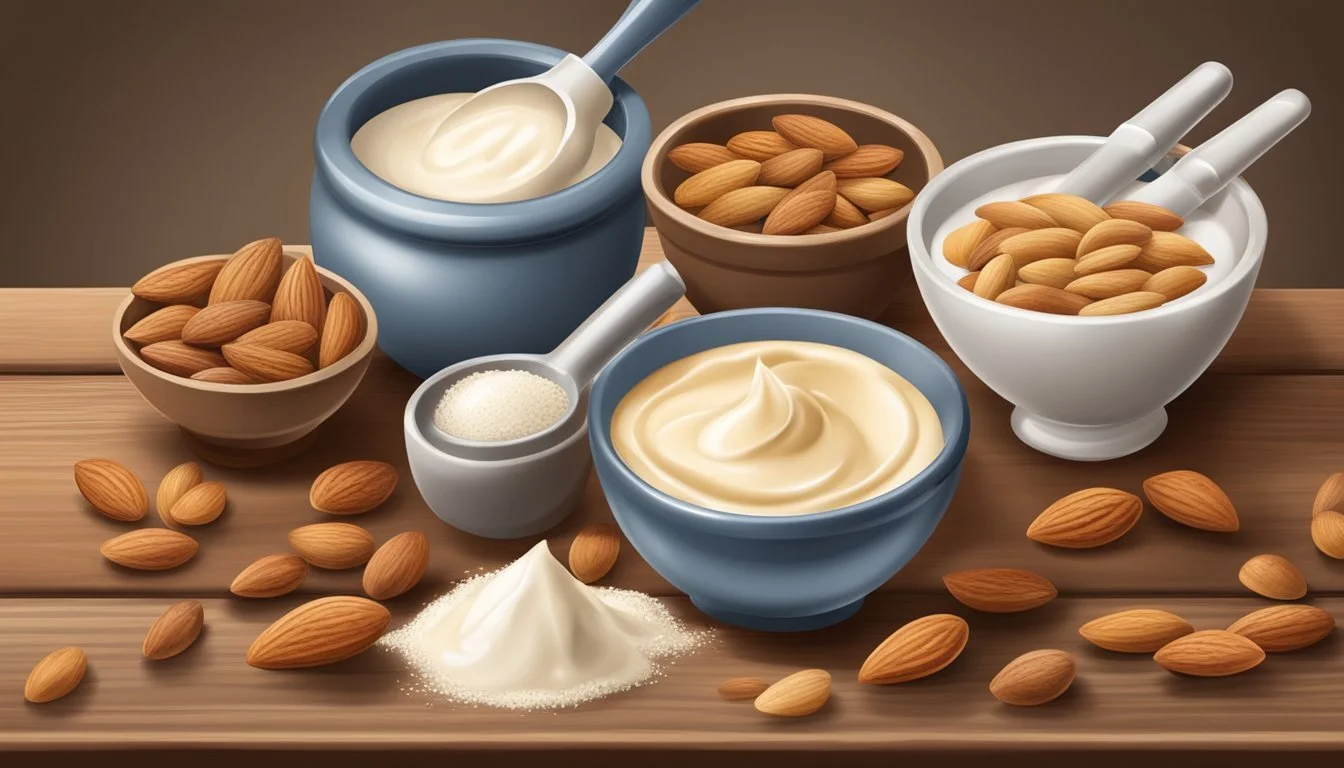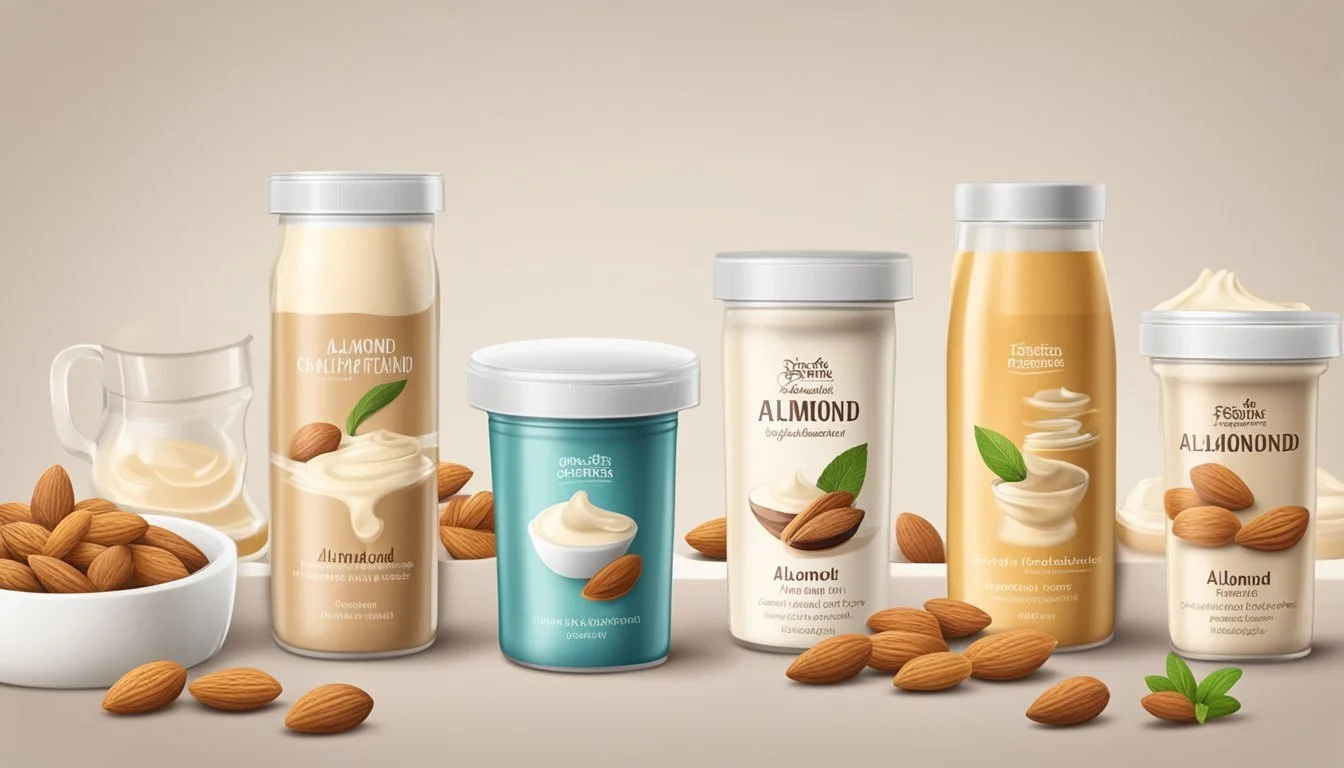Almond Cream Substitutes
Top Alternatives for Your Recipes
Almond cream substitutes offer a range of options for individuals with dietary restrictions, such as those following a vegan diet or dealing with lactose intolerance. These substitutes provide alternatives that cater to health-conscious consumers looking for plant-based cream options without compromising on taste and texture. Substitutes made from almonds have the advantage of being naturally dairy-free, which makes them suitable for vegans and those who cannot consume lactose, a sugar found in dairy products that can cause digestive issues for some people.
In the quest for suitable almond cream substitutes, a variety of plant-based ingredients have been utilized to mimic the creamy, rich consistency characteristic of traditional almond cream. These include nuts such as cashews, which, when soaked and blended, produce a smooth and creamy texture, and coconut cream, known for its thick consistency and mild, sweet flavor that works well in both savory and sweet dishes. For those looking to reduce fat intake, almond milk can be thickened with cornstarch to achieve a cream-like thickness suitable for various recipes.
The availability of these substitutes has expanded culinary possibilities, allowing home cooks and professional chefs alike to innovate without exclusion. The growing demand for inclusive food options demonstrates the importance and effectiveness of these almond cream substitutes not just for those with specific dietary needs, but for anyone interested in exploring the diverse world of plant-based cooking.
Understanding Almond Cream
Almond cream is a versatile ingredient known for its rich texture and nutty flavor. It serves as a vital component in various culinary applications, including baking and sauce-making.
Nutritional Profile
Almond cream contains a blend of ground almonds and other ingredients such as butter, sugar, and eggs. However, the nutritional content can vary when dairy-free substitutes like almond milk are included. Typically, almond milk is lower in calories and fat compared to traditional dairy products. Here is a comparison:
Nutrient Almond Cream (Traditional) Almond Milk (Substitute) Calories Higher Lower Fat Higher Lower Protein Moderate Lower Carbohydrates Moderate Lower
Culinary Uses
Almond cream sees its popularity in desserts and baked goods, offering a distinctive taste and desirable consistency. The cream's rich texture makes it ideal for fillings and spreads. When almond milk is introduced as a dairy-free substitute, it's critical to note that while suitable for sauces and non-whipped desserts, it may not provide the same thickening character for recipes requiring whipping.
Baking: Almond cream imparts a nutty and sweet flavor to pastries like frangipane tarts.
Desserts: A go-to choice for flavored creams in confectioneries.
Sauces: While almond milk can substitute dairy in sauces, one should avoid high heat to prevent curdling.
Dairy-Free Alternatives: For those seeking dairy-free options, almond milk combined with thickeners can mimic almond cream's texture.
In cooking, substitutes such as almond milk require gentle heating and can alter the end result's texture, often necessitating a trial and adjustment approach.
Dairy-Based Almond Cream Substitutes
When seeking alternatives to almond cream with dairy origins, the focus is on items rich in fat content and suitable in flavor and texture. These dairy-based substitutes are often utilized for their similar characteristics to almond cream in various recipes.
Heavy Cream and Its Varieties
Heavy cream stands out due to its high fat content, typically around 36-40%, which contributes to its rich flavor and thick texture. It can directly replace almond cream in recipes where the nutty essence is not essential. Whipped cream, made by beating heavy cream, offers a lighter, airy substitute with fewer calories, albeit with a milder taste.
Heavy Cream Variants Fat Content Texture Heavy Cream High (36-40%) Thick Whipped Cream Lower (after whipping) Light and Airy
Butter and Milk Mixture
A mix of milk and butter creates a homemade heavy cream substitute by combining the milk's liquid properties with the butter's fat content. For each cup of heavy cream, one can blend ⅓ cup of melted butter with ⅔ cup of whole milk. The result mimics the creaminess of almond cream with a rich flavor profile and a calorie count similar to that of heavy cream. The butter lends a touch of saturated fat, which can enhance the texture of the cream.
Cheese Variants for Creaminess
Cream cheese offers a thickness and fat content that closely resemble almond cream, making it an ideal component in frostings and dips. When it needs to be thinned, mixing it with milk can achieve a more liquid consistency. Using Greek yogurt as a substitute imparts a tartness alongside creaminess and can reduce the overall calorie and fat content in comparison to almond cream and other dairy-based substitutes. Evaporated milk provides a concentrated flavor with reduced water content, which can serve as a suitable heavy cream substitute in cooked dishes.
Cheese Variant Characteristics Best Used In Cream Cheese Thick, Rich in Fat Frostings, Dips Greek Yogurt Tart, Creamy, Lower in Calories Sauces, Dressings Evaporated Milk Concentrated Flavor, Less Water Cooked Dishes, Baking
Vegan Almond Cream Substitutes
When seeking alternatives to almond cream, vegans have a variety of plant-based options that can provide the creamy texture and flavor profile needed for various recipes. These substitutes leverage ingredients such as soy, coconut, nuts, and tofu to replace dairy and non-dairy almond cream while maintaining the dish's integrity.
Plant-Based Milks and Creams
Soy and coconut are popular bases for plant-based milks and creams due to their creamy consistency and neutral flavor. Soy milk, when combined with a thickening agent like cornstarch, can mimic the richness of vegan heavy cream. Similarly, coconut cream—the thick part separated from coconut milk—can replace almond cream at a 1:1 ratio. It's especially useful in dishes where a hint of coconut flavor is acceptable.
Nut and Seed Creams
Cashew cream is a prevalent substitute, made by blending soaked cashews with water until smooth, and can be adjusted for thickness by varying the amount of water. Other options include:
White bean cream: Mash or blend cooked white beans until smooth; use as a direct substitute.
Sunflower seed cream: Soak sunflower seeds and blend with plant-based milk for a nut-free alternative.
For optimal results in mimicking almond cream, vanilla or a sweetener might be added to the creams to cater to the recipe's flavor profile.
Tofu-Based Substitutes
Tofu provides an excellent foundation for dairy-free cream substitutes due to its mild flavor and high protein content. Silken tofu, when blended until smooth, mixed with plant-based milk like soy milk, can create a thick, creamy substitute. This mixture lends itself well to sauces, soups, and desserts and is particularly effective in vegan baking. When using tofu as a base, the addition of vegan butter can increase the fat content, thereby emulating a more authentic cream consistency.
Substitutes for Specific Recipes
When looking for substitutes to replace almond cream in recipes, it's crucial to consider both the consistency and the flavor profiles of the alternatives. These selected substitutes are tailored to respect the integrity of specific categories of dishes—baking, soups and sauces, and sweet and savory dishes.
Substitutes in Baking
For baked goods that require almond cream, full-fat coconut milk can add a similar richness due to its high butterfat content. To enhance tenderness in cakes or cookies, one might whisk together soy milk with a bit of cornstarch; this combination mimics the thickening power of almond cream. A table for typical baking replacements:
Almond Cream Substitute Ratio Notes 1 cup Full-fat coconut milk 1 cup Adds moisture and richness similar to almond cream. 1 cup Soy milk and cornstarch mix 1 cup of soy milk with 1 tablespoon of cornstarch Whisk well; it thickens and adds tenderness to baked goods.
Substitutes for Soups and Sauces
In creamy soup or sauce recipes, the aim is to replicate the smooth texture and neutral taste of almond cream. A vegan cashew heavy cream, made from blended cashews and water, imparts a velvety texture ideal for these types of recipes. Alternatively, light cream mixed with a few drops of neutral oil, such as sunflower oil, can enrich soups and sauces without overwhelming other flavors. Ensure to lightly season with salt to balance.
Substitutes for Sweet and Savory Dishes
The choice of substitute in dessert or savory dishes largely depends on the desired end result in terms of flavor and consistency. For desserts, coconut heavy cream can provide the necessary whipping quality and sweetness. In contrast, savory dishes might better benefit from a blend of soy milk and olive oil, which offers a richness while maintaining a subtle flavor that won't clash with other ingredients.
Special Considerations for Substitutes
When substituting almond cream, attention should be paid to allergies, storage, and the necessity to tweak flavor and texture to meet recipe needs.
Allergies and Intolerances
Those with nut allergies should avoid almond cream substitutes due to the risk of allergic reactions. For individuals with lactose intolerance, almond milk and other non-dairy alternatives can provide a safe and comfortable option, lacking lactose which is present in homogenized cow's milk. Selections tailored for dietary restrictions must consider nutritional profiles and potential allergens.
Shelf Life and Storage
Almond cream substitutes like canned almond milk are shelf-stable before opening, with a longer shelf life than dairy cream. Once opened, they should be refrigerated and typically used within 7-10 days. Unlike dairy cream, which must be stored at cold temperatures, unopened shelf-stable substitutes offer greater versatility and convenience in storage.
Adjusting Flavor and Consistency
To mimic the creamy texture of heavy cream, thickeners such as margarine or canned beans can be used alongside almond milk. For recipes requiring a neutral flavor, adjustments may be necessary to mask nutty undertones. Coconut whipped cream can provide a similar consistency for desserts but with a distinct coconut taste. When substituting, use an equal amount of almond milk to the heavy cream called for in the recipe, adjusting as needed for the desired consistency.




